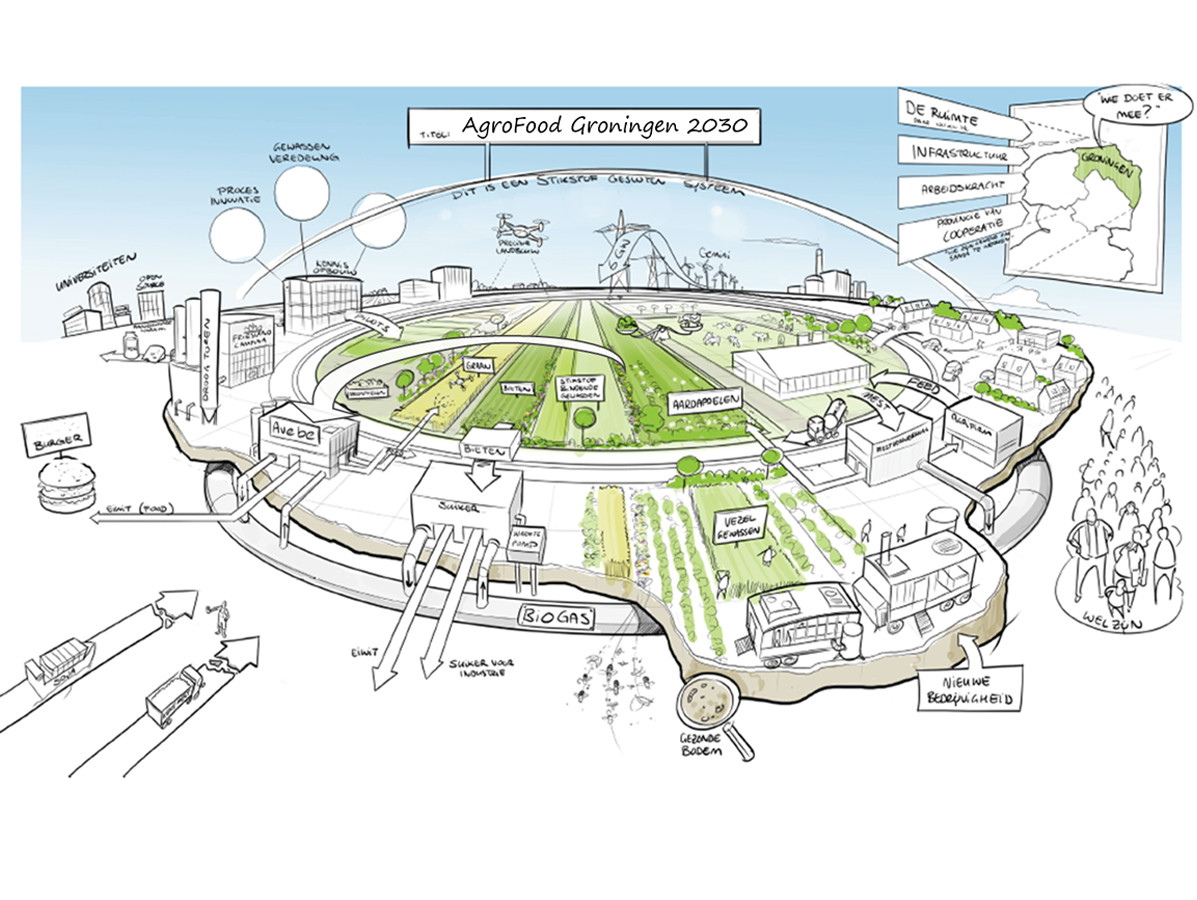
Four large agricultural cooperatives, LTO Noord and the Province of Groningen have joined forces in Fascinating. This program aims to realize the agricultural sector of the future: a circular system that balances sustainability, nature, healthy food and economic impact. Together with knowledge institutions and organizations in the food industry, chemical industry and the energy sector, they are investigating how the agricultural sector of the future can be realized.
Fascinating stands for Food Agro Sustainable Circular Nature Technology in Groningen. Why in Groningen? This region offers not only available agricultural land, but also a large-scale industrial infrastructure for processing biomass. Add to that the availability of sustainable energy, high-level knowledge institutes and a highly developed chemical industry, and the result is complete: Groningen has a unique combination of all the necessary ingredients to write the future of agriculture. The various projects provide employment and knowledge.
Tjeerd Jongsma, director of ISPT: "For me, this is a dream come true! We are finally making the step from quantity to quality and we are going to focus on nutritionally high-quality agriculture".
The focus of our agricultural sector has long been on scale and efficiency. However, this has often been at the expense of nature and soil quality. The focus for the future must be on the added value of the products we create in terms of nutritional value and economic value in a complete circular system with a minimal footprint. A system that creates less nitrogen and CO2 emissions.
The agriculture of the future rests on 4 pillars:
Source: Institute for Sustainable Process Technology